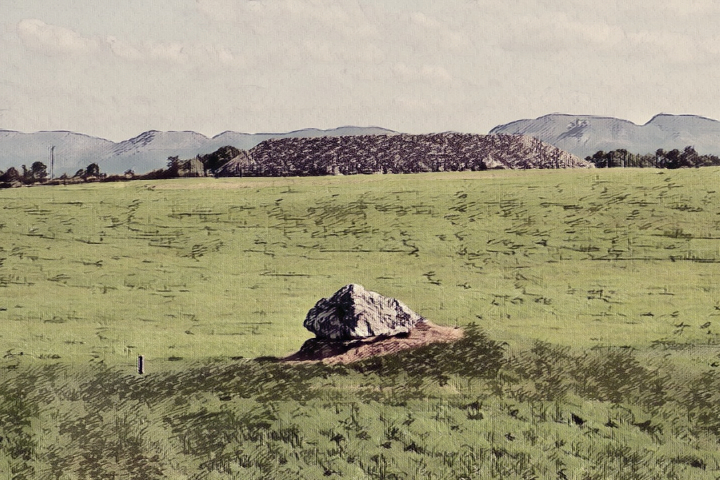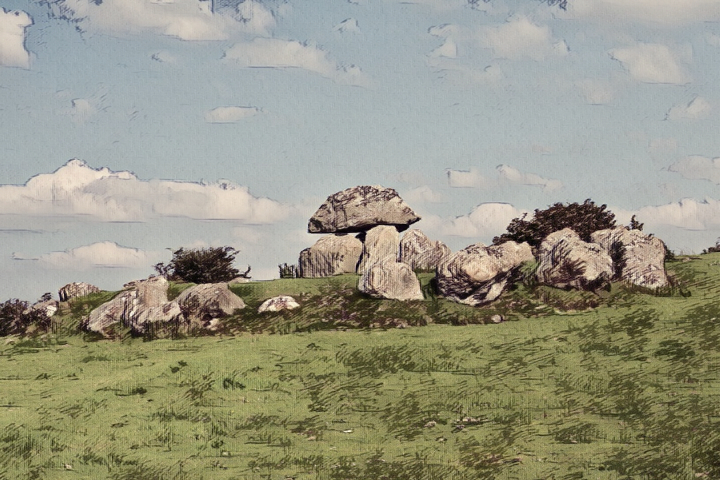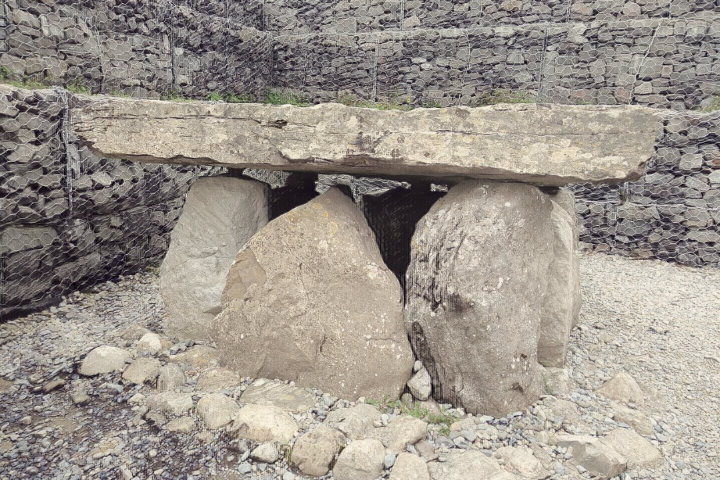Carrowmore (Irish: An Cheathr Mhór, “the great quarter”) is a significant series of megalithic stones located west of Sligo, Ireland, on the Coolera Peninsula. During the Neolithic period, around the 4th millennium BCE, they were constructed. Thirty graves remain, making Carrowmore one of the biggest concentrations of megalithic tombs in Ireland and one of the “big four” together with Carrowkeel, Loughcrew, and Br na Bóinne. Carrowmore is the center of an old ritual landscape dominated by Knocknarea Mountain to the west.
Today, thirty monuments remain in Carrowmore. Originally, there may have been additional monuments in the complex, but during the 18th, 19th, and early 20th centuries, quarrying and field clearance destroyed some of them. The complex is approximately one kilometer north-south and six hundred meters east-west. The majority of the sites are “satellite graves” that surround the biggest monument, which is located on the highest point of the plateau and is a cairn named Listoghil that has been repaired.


In their original form, the monuments consisted of a central megalith resembling a dolmen surrounded by five orthostats bearing roughly conical capstones and enclosing a small pentagonal burial chamber. Each was surrounded by a circle of boulders measuring between 12 and 15 meters in diameter. The boulder rings comprise thirty to forty gneiss rocks, the preferred material for graves. Occasionally, a second, inner circle of boulders is also present. Indicating the intended orientation of the dolmens, entrance stones (or passage stones, primitive double rows of standing stones) extend from the center feature. They are not aligned with the cardinal points but generally face the region of the central cairn. In four instances, pairs of monuments are situated.
Listoghil, which was constructed around 3500 BCE, is 34 meters in diameter and features a chamber resembling a box. The leading edge of the covering stone above the entrance shows marks that may be the sole megalithic artwork discovered at Carrowmore to yet. Three enormous boulders were discovered adjacent to the central chamber and beneath the cairn; these may be the remnants of a damaged passage or a megalithic structure that predates the cairn. As many of the satellite tombs face the center area, it suggests that Tomb 51 was the focal point around which the cemetery grew. This monument was discovered to contain both unburned and cremated remains.

